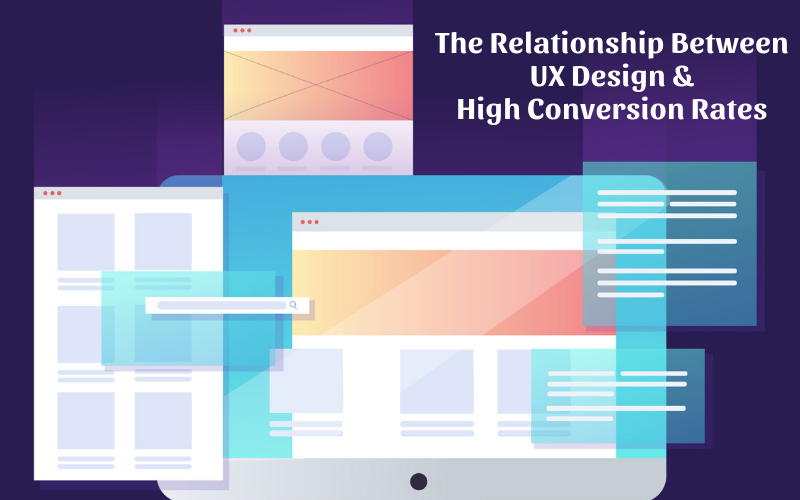In this article we try to understand the importance of UX design to achieve a higher conversion rate for a website. We list some important UX design elements and actions to be implemented to achieve a good user experince for youe website.
Ultimately, the measure of a website’s success is whether or not it converts. Traffic is wonderful, and other metrics are a good sign. Still, if people aren’t subscribing or making purchases, nothing else matters. Price impacts conversions, so do a lot of other factors.
However, in the end, one thing matters more than most. That’s user experience. Provide visitors with low friction, enjoyable experience, and you’re more likely to earn conversions.
Understanding The Elements of UX Design
How do you know you’ve created a great user experience? There are plenty of sites that are enjoyable. They may have really interesting content or have some cool features. That doesn’t mean they’ve been designed with a focus on UX.
To create a website that delivers a great experience, you should focus on the following elements:
- Responsive – Web pages should provide a great experience on every device, browser, and operating system.
- Value Added – Your website content and design should anticipate users’ questions and concerns and answer those.
- Accessibility – All content and pages should be easy to access and use for anyone regardless of ability.
- Helpfulness – All elements included on each web page should be of practical use to your visitors.
- Discoverable – Users should be able to find everything they need easily from within your website.
- Credibility – Your content and design should evoke feelings of trust and build your thought leadership.
- Appeal – Web pages that convert are appealing to the eye.
- Intuitive – Navigation should come naturally to users.
The final element of UX design could be called effectiveness. Just like the word implies, the final test of UX is whether or not visitors take the action you want them to.
What is a Conversion?
Many people think of conversions as being synonymous to sales. That’s not quite true. All sales are conversion. Not all conversions are sales. However, the conversion should be an action that moves someone further down the funnel.
One example is a video view. If you share a viral video on your website, simply because you think your audience will enjoy it, getting people to watch that isn’t really a conversion. On the other hand, getting a visitor to watch a product demonstration video certainly could be.
Importance of UX Design – Influencing Conversions With UX
Better UX can influence conversion both directly and indirectly. When a user is on a web page where they have the ability to complete a conversion, UX can impact that decision directly. These are pages where:
- people can add items to a shopping cart,
- download a free demo,
- request a price quote,
- subscribe to an email list,
- set an appointment,
- view a product demonstration,
- download a whitepaper, etc.
It can be easier to measure the impact of UX on these pages because there’s a direct relationship between visits and conversions.
Indirect UX influence is a bit more difficult to measure. Even when visitors aren’t on pages where they have the option to convert, the user experience you provide for them still influences their likelihood of converting down the line. For example, are your blog posts easy to use and informative? Is your home page mobile friendly, and is it easy to find your contact information? Is it easy for visitors to navigate around your site, read your policy pages, and learn more about your business?
By providing great UX across your entire site, you increase the chance that people at the edge of the sales funnel will eventually move towards converting.
Importance of UX Design –
Applying Great UX to Your Site:
Fortunately, good UX isn’t a mystery. There are concrete actions that you can take in order to create great experiences. These include:
Shortening Forms
In many cases, converting means that users must provide you with information about themselves. This is a necessary process, that is often more frustrating than it needs to be. You can improve UX, and increase the chance of conversions simply by shortening the forms on your site. Only ask for information that you need. If possible, pre-fill information if you have it available. Long forms are a drag and can feel really intrusive.
Streamlining The Checkout Process
The checkout process may be considered the ultimate conversion. Unfortunately, there’s a lot of potential for friction. If you don’t optimize this process and make it as user-friendly as possible, you could wind up with more abandoned carts than conversions.
Here are a few things to make this process as seamless as possible:
- Provide an option for guest checkout so people aren’t forced to create a user account to make a purchase.
- Create a simplified header for the checkout process to eliminate distractions.
- Make each step in the checkout process clear. For example, use ‘Click to Enter Billing Information’ instead of ‘Click to Continue’
- Use contextual keypads on mobile devices
- Space ‘tappable’ buttons adequately
- Provide multiple payment options for users’ comfort and convenience
- Auto-detect credit card type based on the card number input
- Providing Relevant Content
Content is a huge part of UX. It influences whether or not your site is helpful, value-added, or credible. On-site content should be informative, it should answer the user’s questions, and be structured in a way that is easy for visitors to consume. Great content is also personalized. Tone matters, as well as content.
One important consideration is location. If you have audiences across multiple regions, even countries, content that is relevant in one area may not be relevant in another. To provide the best UX, global companies often use resources like Pick Writers to find localization services.
Improving Website Performance
Your website can be intuitive, trustworthy, and full of great content. If your pages take more than a few seconds to load or take up too much bandwidth, you’re UX is torpedoed from the start. In fact, 40% of users will abandon your site if there are performance issues. The stakes are even higher with mobile where 85% of users expect faster performance on their phones than desktops or laptops.
Improving Navigation
It shouldn’t be difficult for users to find the information they need, or to execute any desired action on your website. If there are areas of friction, this will lead to frustration. Improve UX by making navigation consistent, using descriptive Alt text, implementing a search feature, and making buttons and links very clear. Most importantly, user test intensely. Developers and designers are often too immersed in the process to provide objective feedback on the pages they create.
Using Videos And Other Visual Elements
How do you provide users with the information they need without producing landing pages that are text-heavy and cumbersome? This is where embedded videos, infographics, and other visual elements can really help. They provide information in an engaging way and help keep users on the page longer.
Final Thoughts
So now you know the importance of UX design? It all boils down to – Make it easy for visitors to use your website, and conversions will follow. Make it a pleasure, and you could end up with more conversions than you ever imagined. Focus on the elements of good UX to get started in the right direction.




